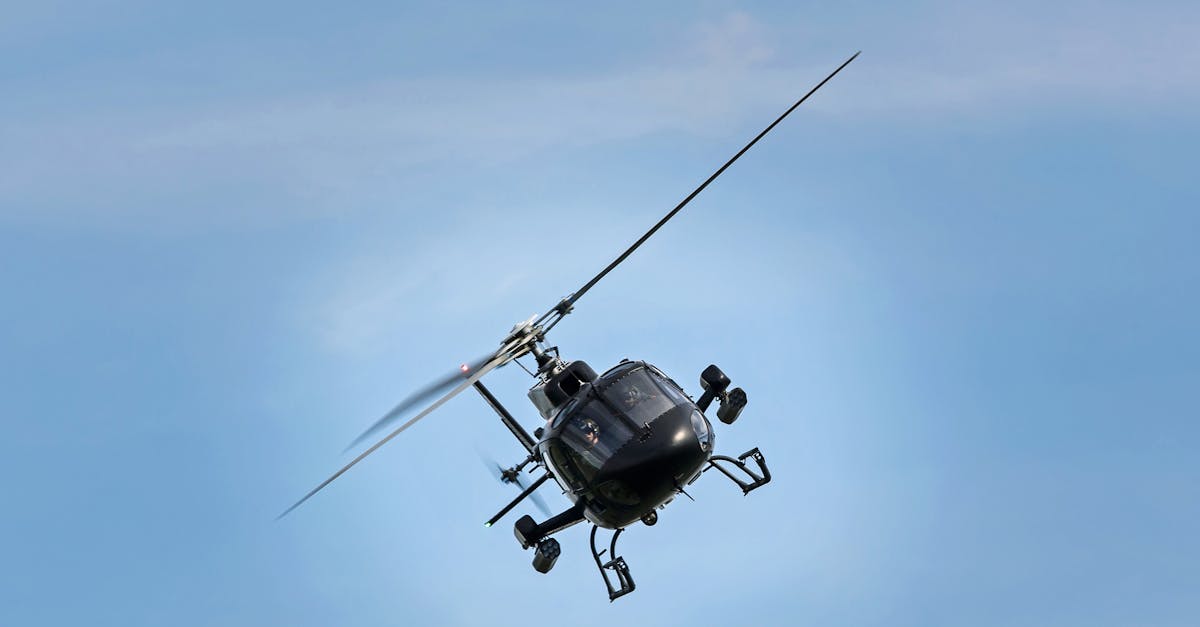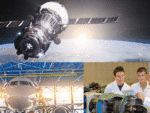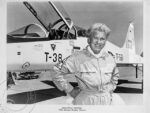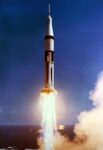The fascinating world of aeronautics reveals technological wonders such as the helicopter. This aircraft, distinct from airplanes, uses a complex system of rotors to generate the lift necessary for its flight. By rotating, the rotor blades modify the angle of incidence, thus allowing the helicopter to rise, move, and even maneuver backward. Understanding how these flying machines operate involves exploring the physical principles that govern their hovering flight and their agile navigation in the air.
The operation of a helicopter relies on a fundamental aerodynamic principle: lift. Unlike a conventional airplane that uses fixed wings, a helicopter employs a main rotor, consisting of several rotating blades. These blades spin around a vertical axis at high speed, creating a pressure difference between the top and bottom of the blades, which generates the lift necessary to elevate the aircraft off the ground.
Lift is directly influenced by several factors. The rotational speed of the blades, their angle of incidence, and the air density all play a crucial role. By increasing the angle of incidence, that is, by tilting the blades upward, the area crossed by air is increased and consequently the lift. However, an angle that is too high can lead to a phenomenon called stall, where lift suddenly decreases.
To allow movement in various directions, helicopters employ a sophisticated control system. The collective pitch lever enables the pilot to modify the angle of incidence of all blades simultaneously, facilitating takeoff or landing. Conversely, the cyclic pitch allows changing the angle of incidence of each blade individually during their rotation, thus promoting lateral or fore-aft translation of the aircraft.
Another fascinating point is the ability of a helicopter to perform maneuvers that airplanes cannot achieve. Thanks to the unique configuration of its rotor, a helicopter can hover, reverse, or make tight turns. This is made possible by advanced systems that manage the thrust and direction of the helicopter in real-time.
The fuel of a helicopter, typically kerosene or aviation gasoline, powers the engine that drives the main rotor. The power generated by the engine is essential, as it must compensate for the weight of the helicopter and ensure effective maneuverability.
Helicopters are also capable of flying at varying speeds. The cruise speed often ranges between 200 and 300 km/h. However, any emergency maneuver requires rapid responsiveness from the pilot to adjust the blade angle or the engine power. Due to their hovering capabilities, they are particularly sought after in rescue operations, military missions, and transporting goods in hard-to-reach areas.
It is interesting to note that technological advancements are constantly evolving in the field of helicopters. Innovations such as gyro aviation are revolutionizing the way we think about air transport. These new models minimize the constraints related to flight while improving performance. By integrating advanced navigation systems and optimizing the aerodynamic structure, these devices could transform our approach to aerial mobility.
Understanding how a helicopter operates is essential for anyone looking to embark on a career in aeronautics. Disciplines such as aeronautical structural engineering or avionics maintenance are crucial. For those interested in these careers, resources and educational pathways are available to shape their professional future in the field.
To learn more about the various professions related to aeronautics, it is relevant to explore articles such as How to shape your future as an aeronautical structures engineer, or How to propel your career to the skies by becoming an avionics technician.

FAQ: Operation of Helicopters
What makes a helicopter fly? A helicopter flies thanks to the rotation of its main rotor, which generates sufficient lift to raise the aircraft. By modifying the angle of incidence of the blades, it is capable of ascents and various maneuvers.
How is a helicopter piloted? The piloting of a helicopter relies on specific controls, notably the collective pitch lever and the cyclic pitch. These elements allow adjustment of the lift and direction of the helicopter.
What are the specific maneuvers a helicopter can perform? A helicopter can perform maneuvers such as hovering, flying forward, and even flying backward, which distinguishes it from traditional airplanes.
How does a helicopter take off? During takeoff, the pilot uses the collective pitch lever to increase the angle of incidence of the blades, thus allowing the helicopter to take off vertically.
What influences a helicopter’s ability to fly? The ability of a helicopter to fly depends on several factors, including its weight, the power of its engine, and environmental conditions.
What is the difference between a helicopter and an airplane? Unlike airplanes that use wings to fly, a helicopter has a rotating wing that allows it to take off and land vertically, offering greater flexibility.
How is a helicopter directed? The direction of a helicopter is controlled by the cyclic pitch, which modifies the angle of the blades according to the desired direction, thus allowing the aircraft to pivot and move laterally.
What type of fuel does a helicopter use? Helicopters typically operate on kerosene or aviation gasoline, which power their engines to generate the necessary power for flight.






















